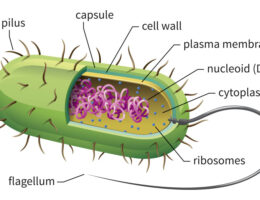DNA, or deoxyribonucleic acid, is a complex molecule that carries genetic information in living organisms. Here is a brief description of the labeled parts of the DNA structure:
- Double helix: The twisted ladder-like shape of DNA, which is composed of two strands of nucleotides wound around each other.
- Nucleotide: The basic building block of DNA, consisting of a sugar molecule, a phosphate group, and a nitrogenous base.
- Sugar-phosphate backbone: The alternating sugar and phosphate molecules that make up the outer edges of the DNA double helix.
- Nitrogenous base: The chemical component of the nucleotide that provides the genetic code for the DNA molecule.
- Adenine (A): A nitrogenous base that pairs with thymine (T) in the DNA molecule.
- Thymine (T): A nitrogenous base that pairs with adenine (A) in the DNA molecule.
- Guanine (G): A nitrogenous base that pairs with cytosine (C) in the DNA molecule.
- Cytosine (C): A nitrogenous base that pairs with guanine (G) in the DNA molecule.
- Hydrogen bond: The weak bond that holds together the nitrogenous base pairs in the DNA molecule.
- Base pair: The complementary pairing of nitrogenous bases in the DNA molecule (A-T and C-G).
- 5′ and 3′ ends: The two ends of the DNA molecule that are defined by the position of the sugar molecule.
These are the main labeled parts of the DNA structure. The DNA molecule is a complex and essential component of living organisms, providing the instructions for the development, function, and reproduction of all cells.



